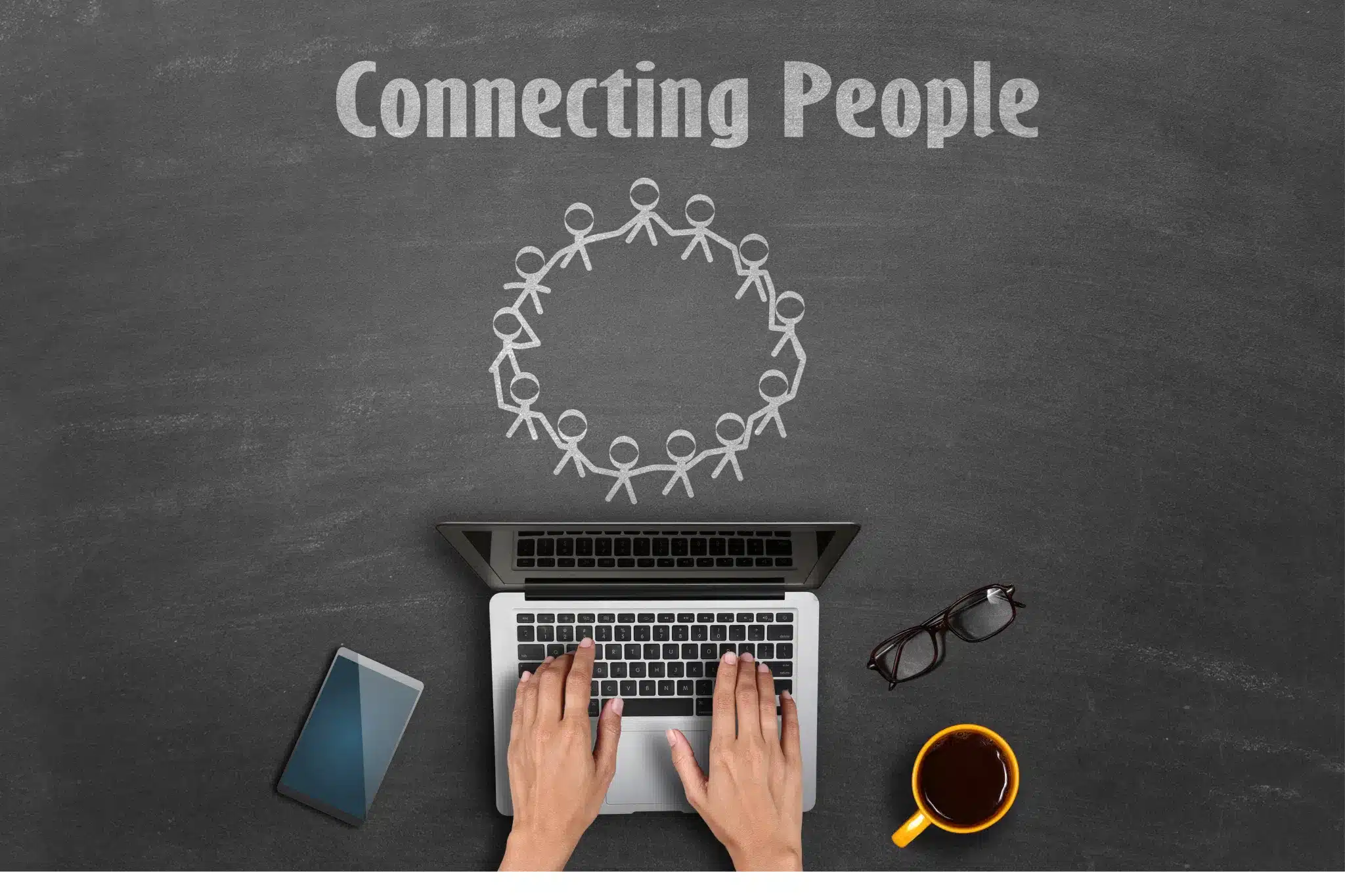
Do you have a distributed team with employees living miles away? With such a diverse number of people from different geographical and cultural backgrounds, are you finding it challenging to create authentic human connections within a remote team?
You are not the only person facing it.
With 62% of companies globally currently having a remote working policy, one of the biggest challenges that CEOs of remote teams face is fostering connections among the remote employees and developing genuine human relations. This directly affects the work culture and employee engagement within the company.
Do you need human connections within a remote team?
The answer is YES.
Interpersonal relationships have a significant impact on mental health and employee behavior. Cooperation, trust, and fairness in the workplace also substantially impact how your employees are going to perform.
In his book, “Social: Why Our Brains Are Wired to Connect,” Professor Matthew Lieberman writes that our need to connect is as fundamental as our need for food and water; we suffer when our social bonds are threatened or severed.
One study showed that individuals who had 15 minutes to socialize with colleagues had a 20 percent increase in performance over their peers who didn’t.
How human connections within remote teams contribute to the organization’s growth?

1 Enhances trust
Better human connection within remote teams can lead to trust among employees and enhance their work experience.
2 Facilitate innovative thinking
Positive interaction among employees can facilitate cooperation, teamwork, and innovative thinking among your remote employees. It will also help them stay aligned and avoid any confusion or job ambiguity.
3 Increase rates of job retention
Employees who are satisfied with the overall quality of their workplace relationships are likely to be more attached to the organization. Thus working on human relations in remote teams can increase the overall rate of job retention in your organization.
4 Improve employee satisfaction
Positive relationships among peers significantly influence and improve employee satisfaction.
5 Positive impact on employee engagement
Man is, by nature, a social animal. Thus, social interactions play an essential role in the well-being of remote employees, which, in turn, has a positive impact on employee engagement.
Easy to Implement Virtual Coffee Software for Remote Teams
CoffeeConnect automatically connects two people every week based on their interests in slack and helps them build camaraderie easily with ice-breakers questions and rapid-fire quizzes.
Virtual Games for Remote Teams
CoffeeConnect connects two people every week based on their interests in slack and helps them build camaraderie easily with ice-breakers questions, rapid-fire quizzes and virtual coffee.
How can you create authentic human connections within a remote team?

1 Foster 1:1 culture
Problem: Are you facing challenges communicating with your remote employees? If yes, you are not the only person to feel that way.
Create and maintain a one on one culture with a dynamic feedback loop between managers and employees. Also, be a better listener and communicator to provide your remote employees the support they need to give their best at every task.
Easy to Implement Virtual Coffee Software for Remote Teams
CoffeeConnect automatically connects two people every week based on their interests in slack and helps them build camaraderie easily with ice-breakers questions and rapid-fire quizzes.
Virtual Games for Remote Teams
CoffeeConnect connects two people every week based on their interests in slack and helps them build camaraderie easily with ice-breakers questions, rapid-fire quizzes and virtual coffee.
2 Make proper use of technology
Problem: Do you think that things like stopping by someone’s desk to ask a quick question, catching up on personal lives in the break room or at the elevator, or debriefing a meeting after it’s officially over are no more possible in a virtual workplace?
Find technological alternatives wherever possible. Don’t facilitate the technology to get the works done but to foster genuine human relations as well.
For example, with communication tools like Slack, Microsoft Teams, and t, people can virtually “stop by someone’s desk” to catch up or talk about non-work things. Or they can send a slack message whenever a question pops into their mind.
3 Ask a “check-in” question
Problem: With no face to face interaction, are you finding fostering personal connections a lot harder?
Make sure to do both professional and personal check-ins, especially in one on one meetings. Instead of jumping directly to the agenda, you can start the meetings with questions like, “What is your favorite childhood memory?” or “What was the last thing you achieved?”
Such gestures will make your employees feel part of the team and also help you sow a bond of friendship with your employees.
4 Set agreed-upon ground rules for communication
Problem: A distributed team usually has diverse people with diverse communication skills. Are you finding it challenging to make all work together on forming better human connections in your remote team?
Start with some ground rules. You can set rules such as asking peers how their day was or general life questions whenever they get the chance, limit mute whenever possible while on a video call, or keeping the video on at least for the first few minutes to say hello. Also, ask them to introduce themselves to their teammates and maintain a friendly tone.
Discourage an email only culture. And encourage your teams to hop on a call or chat with at least one teammate after important meetings and events to share each other’s thoughts and doubts.
5 Arrange virtual happy hours and Virtual coffee sessions

Problem: Lack of occasions to get your remote employees to interact with each other outside working hours.
Why not create such informal virtual meetups. Where your remote employees can share their feelings, life updates, and things their peers may find interesting over a virtual coffee.
It will also provide you and your team a chance to learn more about each other’s cultural background. And have some real talk about what’s going on in the world and how your employees are dealing with it.
You can also plan group hangouts. Get the team together and have everyone bring a beverage or snack of choice. Play an online game or talk about things of interest. And let them discover commonalities among themselves.
Easy to Implement Virtual Coffee Software for Remote Teams
CoffeeConnect automatically connects two people every week based on their interests in slack and helps them build camaraderie easily with ice-breakers questions and rapid-fire quizzes.
Virtual Games for Remote Teams
CoffeeConnect connects two people every week based on their interests in slack and helps them build camaraderie easily with ice-breakers questions, rapid-fire quizzes and virtual coffee.
6 Schedule online work together sessions
Problem: Are your remote employees missing work together in the same space as in a physical office?
Well, no more. With technology like Google meet or Zoom, create co-working sessions where your remote employees can work together doing their separate work while being on a video call.
This will virtually create the same office ambiance of co-working with colleagues in the same space.
7 Meetups
Problem: Amidst the rise of AI; chatbots; smart assistants; robots; smart speakers; WhatsApp, Slack, Zoom, and other communication apps; are you forgetting the fact that face to face communication is the best form of fostering human connection?
Though it may seem to add to the annual budget, it’s important for virtual teams to come together in person as often as possible. For example, top companies like Automattic hold meetups 1-2 times a year to help their employees strengthen the bond.
8 Arrange special events
Problem: Being physically far off, are your employees missing celebrating special occasions together?
You can also take advantage of holidays and anniversaries. It will create another opportunity for you to get to know people who work under you or with you.
Find icebreaker games to build great connect with your remote teams HERE!
You can take inspiration from the Zapier team in this regard. At Zapier, the team works together to find the perfect gift for their teammates and get together over video chat on the day of the ‘party’ to open presents and talk about them.
9 Foster trust and empathy
Problem: Different cultural backgrounds and interpersonal differences may make it tougher to create friendships and bondings, leading to misunderstandings.
Thus it is important to understand the cultural backgrounds and create an environment of empathy among employees. Establishing trust in any relationship starts with empathy and respect. In order to effectively work together, your remote employees need to be able to understand one another — and one another’s emotions.
It is common for a person to have a bad day. And being empathetic will help them survive such moments by being patient to the person on the other side of the phone as much as they would have if it were a face to face interaction.
A take-home message

Elevating interactions is a crucial step in building and fostering connections among your employees and building a culture of open communication that fosters trust and relationship building.
In the absence of water-cooler chats, no lunches together, informal conversations, and an office environment, schedule and plan deliberately to get the team together virtually.
Suggestion
Respect your employee’s feelings and emotions and encourage your team members to consciously take steps to keep the human connections alive and intact.







